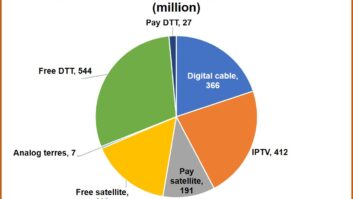The new wave of digitalisation will usher in a profound transformation. If we look closer at that transformation, we can see it take place across three landscapes, all of which pay-TV operators will have to successfully navigate.
The first landscape is technology. And under that tech umbrella, some underlying trends can be observed. The first is one of increasingly horizontal consumer devices.
Essentially, the CE and IT industries have fundamentally transformed the video business and native IP devices are becoming the norm. And video devices must behave as good citizens in this brave new IP ecosystem. As a result, we see an entirely new level playing field no longer driven by STB middleware; rather, it’s governed by consumer devices including smart TVs and casting devices that marry large-screen viewing to smartphone-driven content discovery.
Now, there’s a similar simplification taking place at the headend side of the equation, which brings us to the second trend – service virtualisation.
The most daunting TV use cases dramatically simplify if aforementioned native IP devices directly hit a native Cloud service. And Cloud technology clearly prevails across the board, even in on-premise deployed software infrastructures. This allows technology bundles to be modularised enabling “XYZaaS” models that drive an accelerated shift of value to the business headend.
The most transformative technology trend is, however, data.
Mainstream TV operators have long been sitting on a wealth of under-utilised consumer and behavioural data, but most of them are all set to catch up soon. Data analytics and AI/ML technology meanwhile have also become significantly more useable and affordable for operators.
It’s safe to assume that, with data at the heart of the business, systems without these capabilities are going to be given a serious run for their money.
But away from technology, the next landscape operators must navigate is content.
We’re now in the “post-OTT era”, where OTT is a mainstream constituent of any modern pay-TV operation. And we’re now going to see two competing trends that will keep each other in check for the foreseeable future: content fragmentation and content aggregation.
D2C offers keep mushrooming as more big players enter the space – Disney+ is just one recent entrant making its way into the playground. The new norm is some form of skinny bundle topped up with a raft of OTT add-ons, whether on-demand or linear, and this list of add-ons keeps on growing.
This begs the question: how many of these content bouquets (and their apps) can a consumer realistically deal with? The reality is that no one really knows. But sooner or later there must be some sort of tipping point. And that’s when the legitimate concern about too much fragmentation leads to super-aggregation endeavours, mostly undertaken by incumbent pay-TV operators.
The ones that will emerge from this transformation are going to be the ones that enable their subscribers to switch between multiple content sources and services effortlessly with a simple, uncluttered and engaging interface that harnesses the respective OTT apps as appropriate.
The driver to some form of super-aggregation may be clear. But the implementation remains, however, far from evident All will depend on how shrewd the operator is in bridging content silos through a low-touch onboarding of OTT content, making itself the central gateway to all content that consumers have access to, across all screens while still providing a coherent user experience.
This leads us to the third landscape – the commercial landscape.
The crux of the matter will be to achieve a convenient single sign-on into an over-arching UEX that delivers unified search and deep linking into a modular collection of OTT bouquets and their respective apps.
Ultimately, long-term success will depend on the ability to smartly and elegantly blend content line-up with the inevitable OTT services required to complete the offer. And the result is that large content-centric operators are paradoxically well positioned to become global OTT players themselves.
But for all the innovation we’ve seen in the digital media space, the content monetisation model has remained static. It’s still highly inspired by the historical bundling between content and the distribution conduit.
Content type still largely determines the monetisation and distribution model – a combination of [advertising, subscription, transaction] x [VoD, linear]. But this can become much smarter and indeed dynamically optimised provided there is an adequate data-driven toolchain and methodology behind the business operations of content.
And as the monetisation models will become more fluid and dynamic, the days of TV being all about acquiring the rights and simply putting the content out there for consumption are over. We’re entering the era of active content monetisation; operators will have to rely on a smart combination of data analytics and curation to not just constantly monitor and tune the catalogue but also to actively monitor and promote content.
The digital media and entertainment space is undergoing a transformation it has never seen before. The winners will be the ones that master all three of these landscapes.






